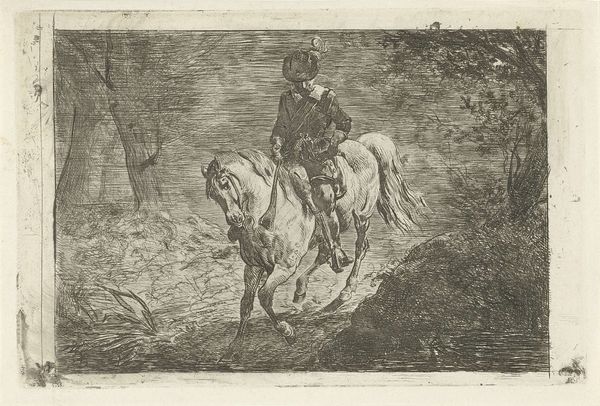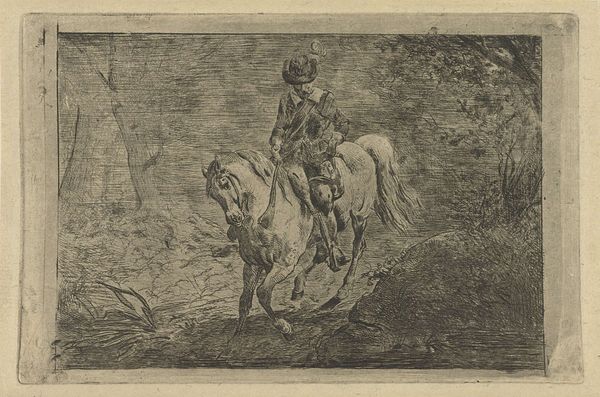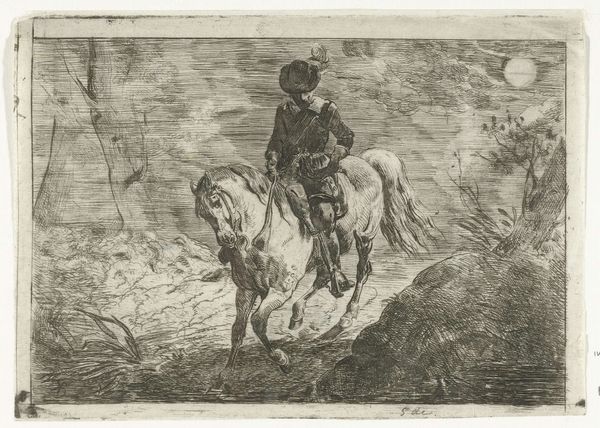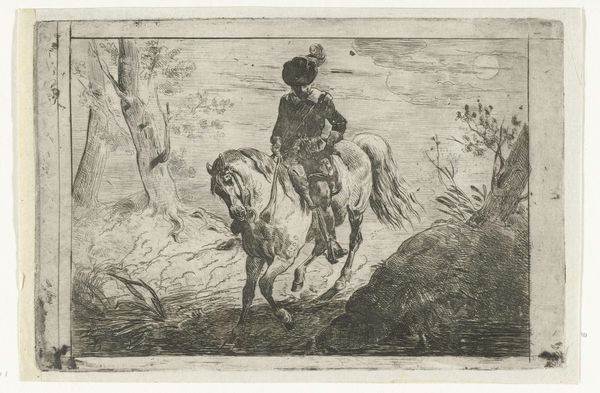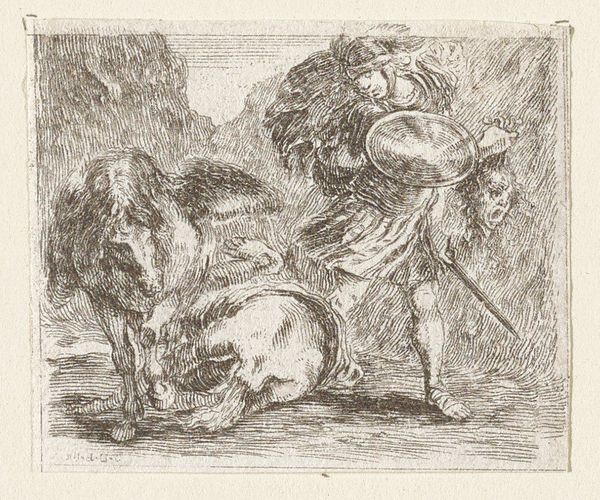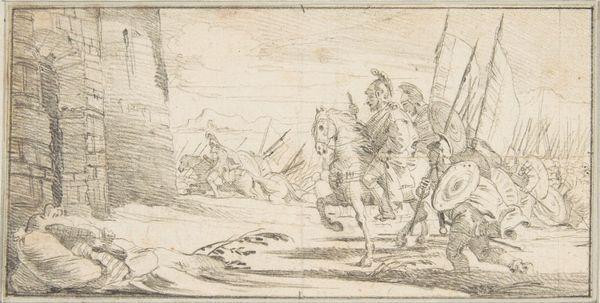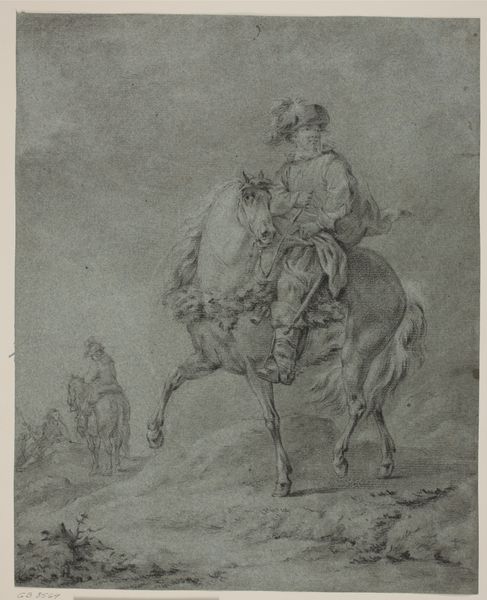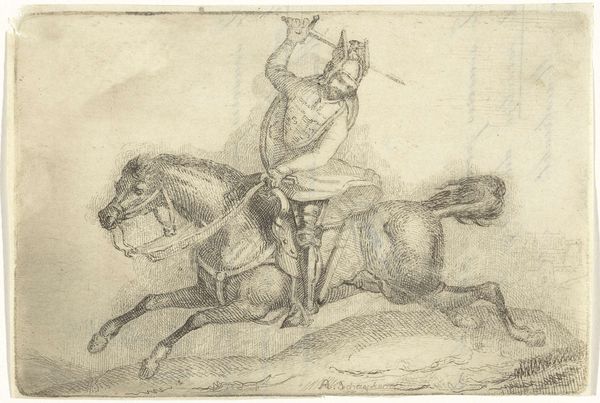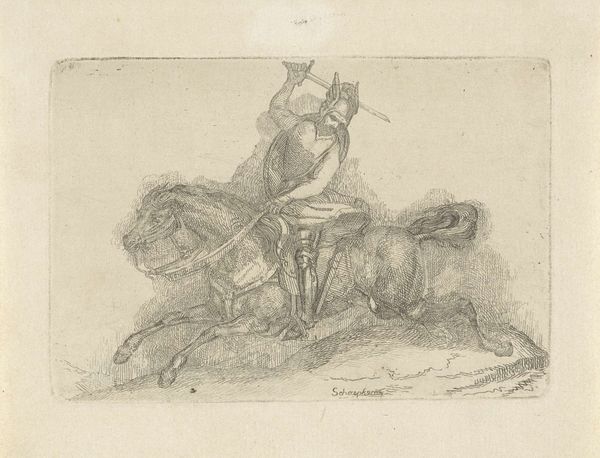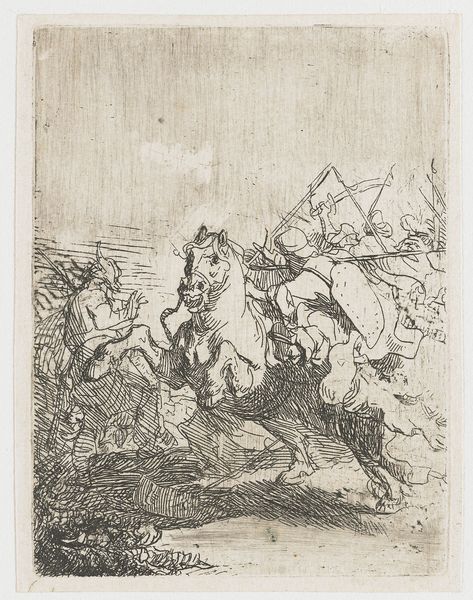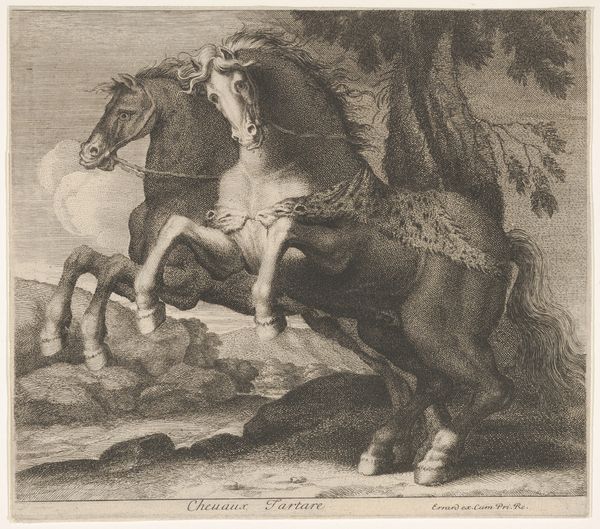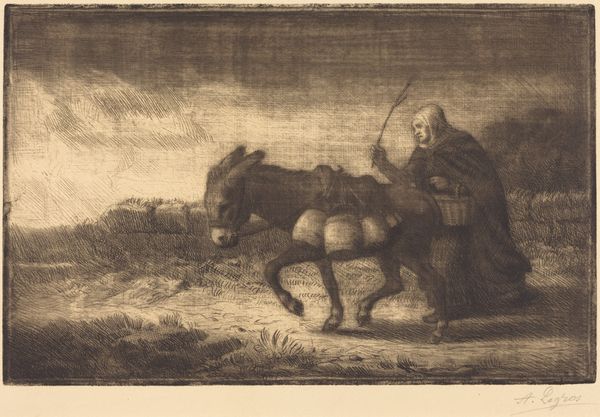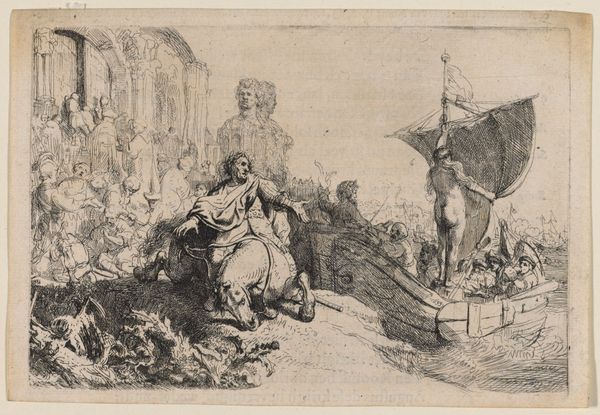
Dimensions: height 124 mm, width 185 mm
Copyright: Rijks Museum: Open Domain
Editor: This is "Ruiter," an etching by Karel Frederik Bombled, made sometime between 1832 and 1902. There's a moody atmosphere, and the lone rider seems to be emerging from or perhaps disappearing into the dense landscape. How do you interpret this work, particularly regarding its use of imagery and the story it might be telling? Curator: This print immediately evokes a sense of romanticism. Consider the horse, a symbol of power, freedom, and even the untamed aspects of nature itself. Bombled positions the rider, shrouded in shadow, almost melting into the background, suggesting a deep connection, perhaps even a loss of self, within the natural world. Do you see how the blurring between the figure and the forest affects the overall meaning? Editor: I do see that, yes! It almost feels like the rider's identity is secondary to the landscape itself. I am wondering about the cultural associations of the figure. Curator: Precisely! Think of the historical context. The figure is nearly obscured. Bombled could be implying something about humanity's smallness when facing nature. Or, it may be the rider's journey to understand himself within a wider nature. The dense lines of the etching contribute to the mood, reminiscent of the Symbolist movement, but arriving a bit early to be definitively part of that cultural wave. Editor: It’s fascinating how these images build layers of possible meaning through symbolism and visual language. Curator: Indeed. Each element—the horse, the landscape, the shadowy figure—contributes to a rich tapestry of interpretation, drawing on both collective cultural memory and our individual experiences of nature. The interplay makes us wonder about time, continuity, and transformation, too. Editor: I will certainly look at other Romantic landscapes with those ideas in mind. Thanks for your insights!
Comments
No comments
Be the first to comment and join the conversation on the ultimate creative platform.
